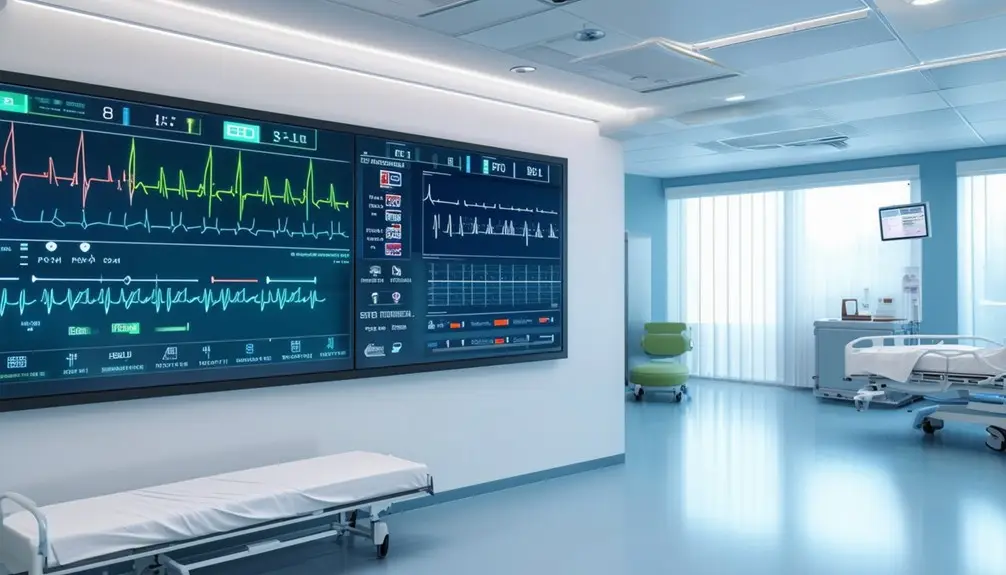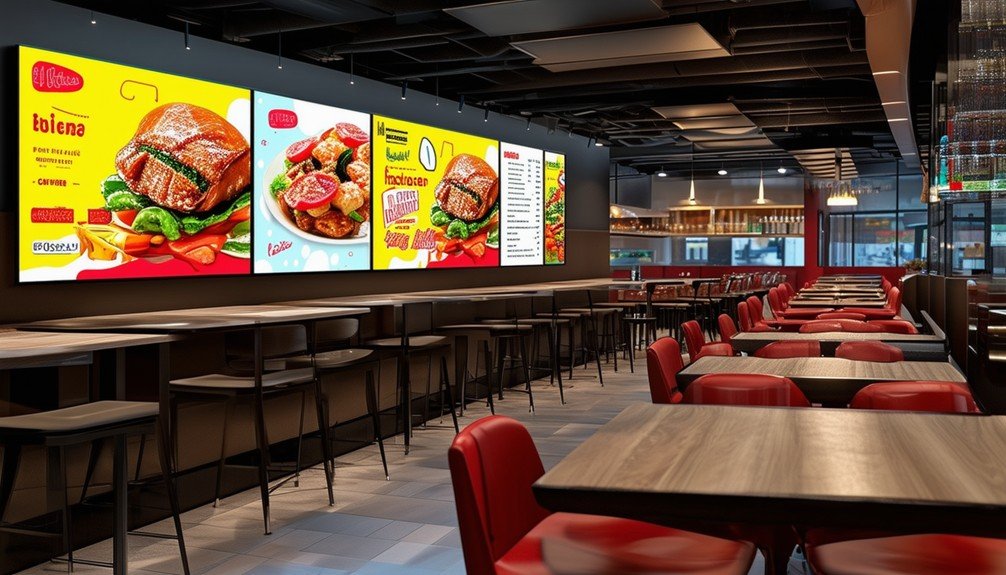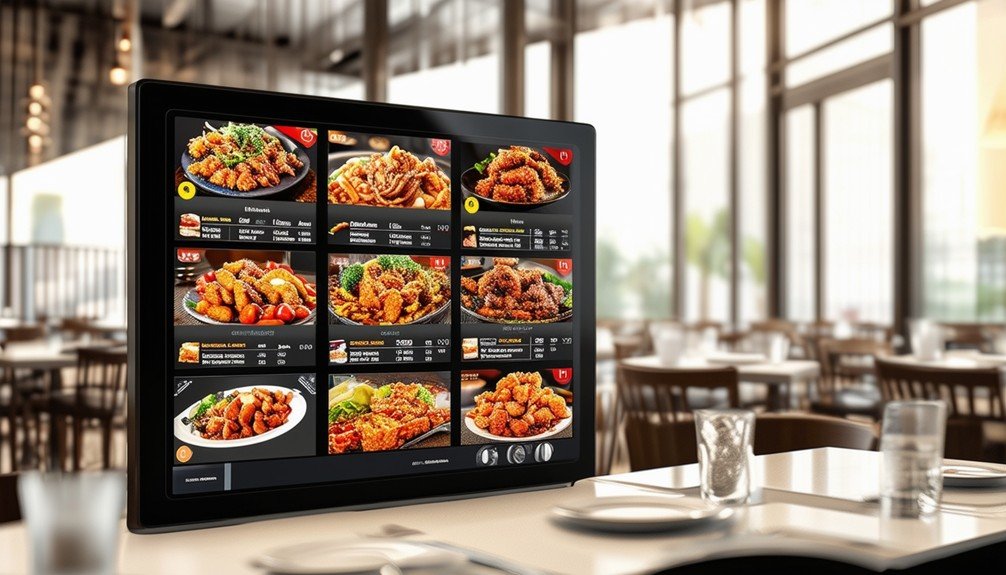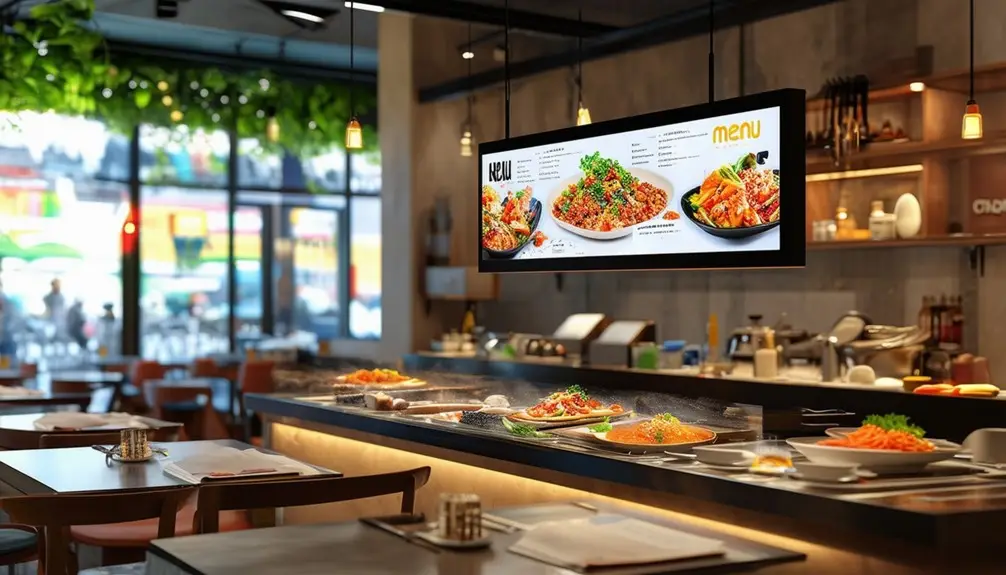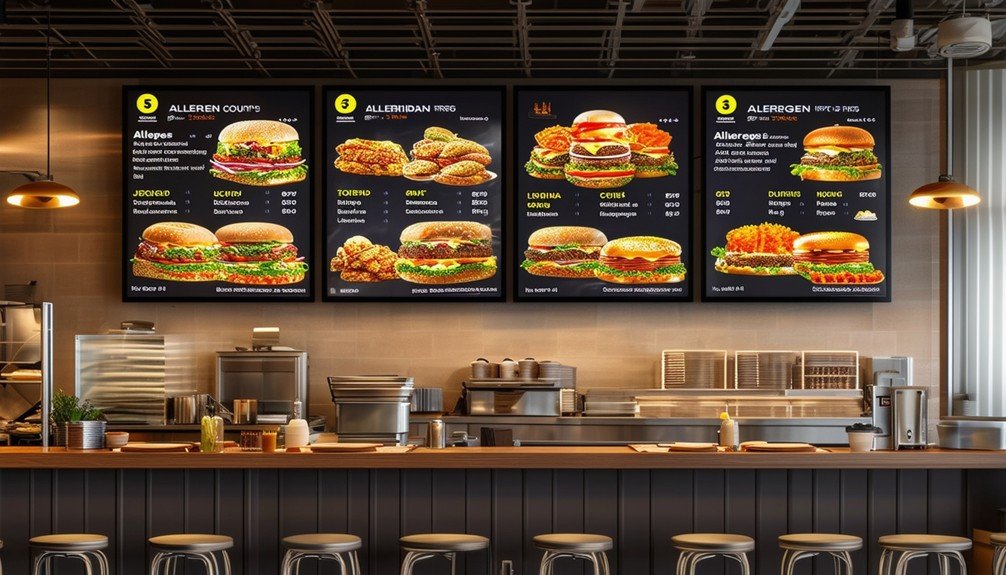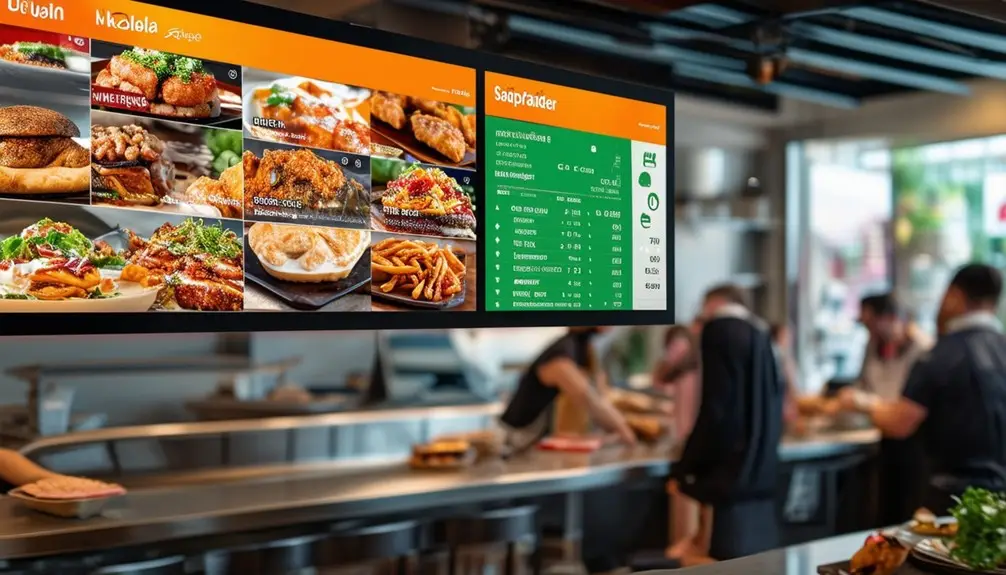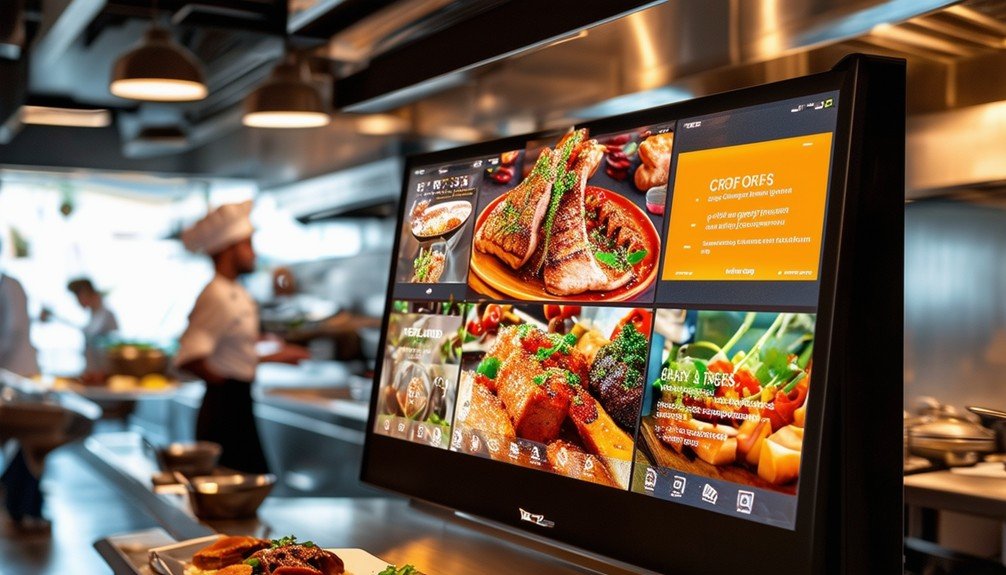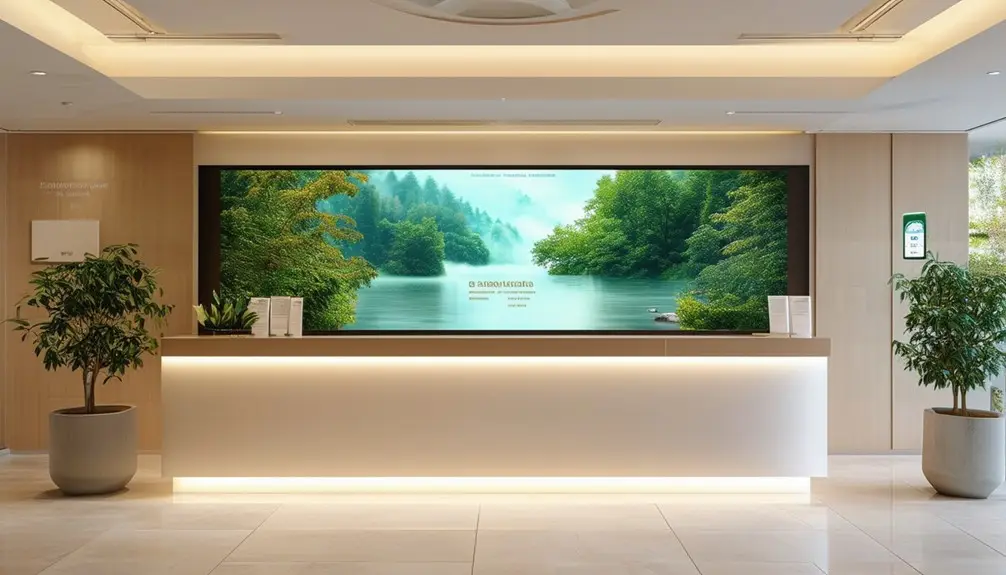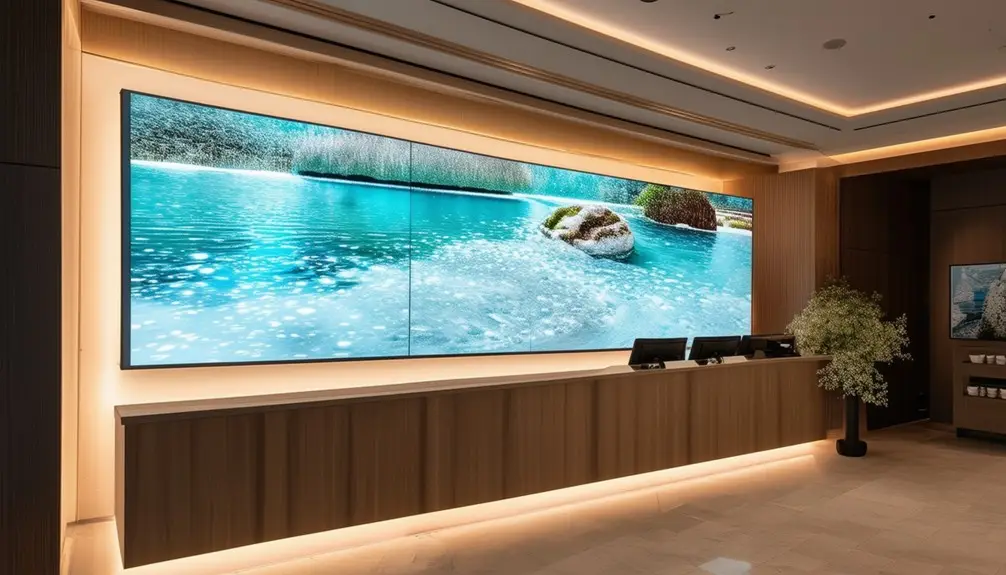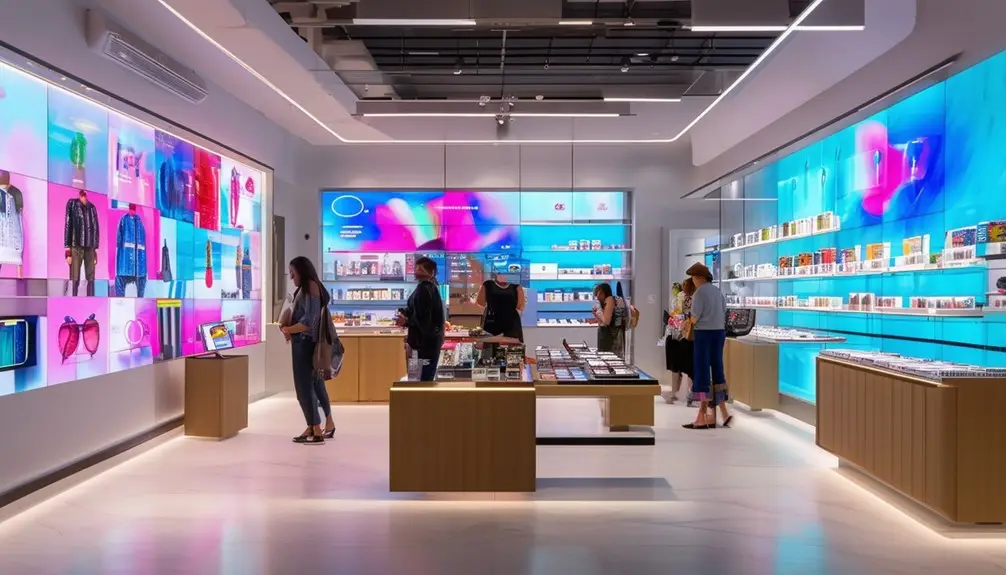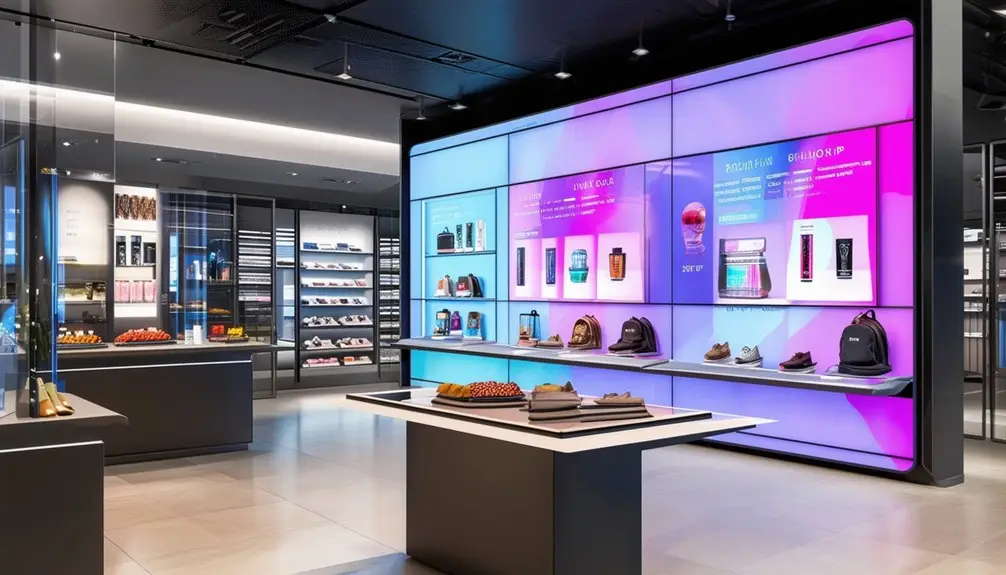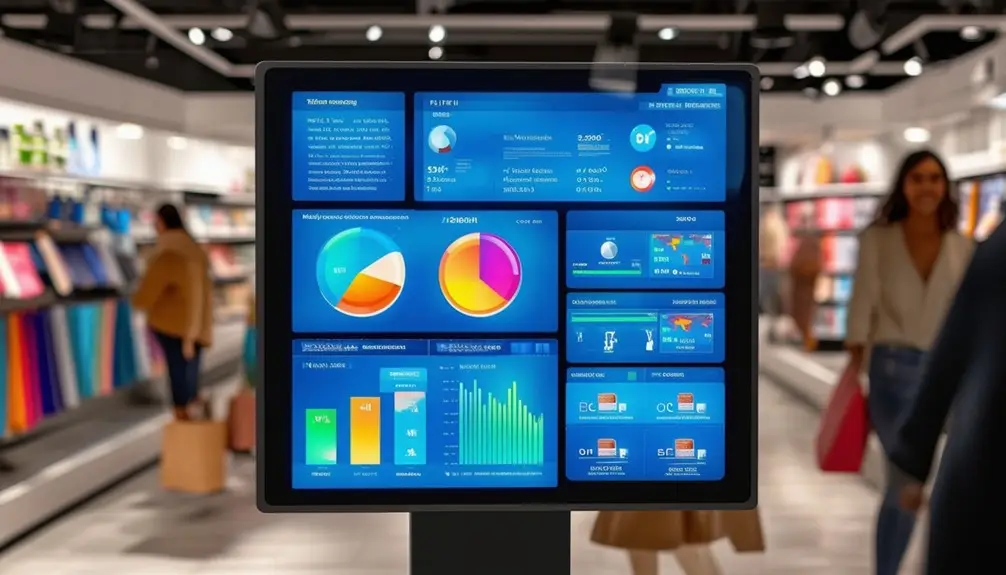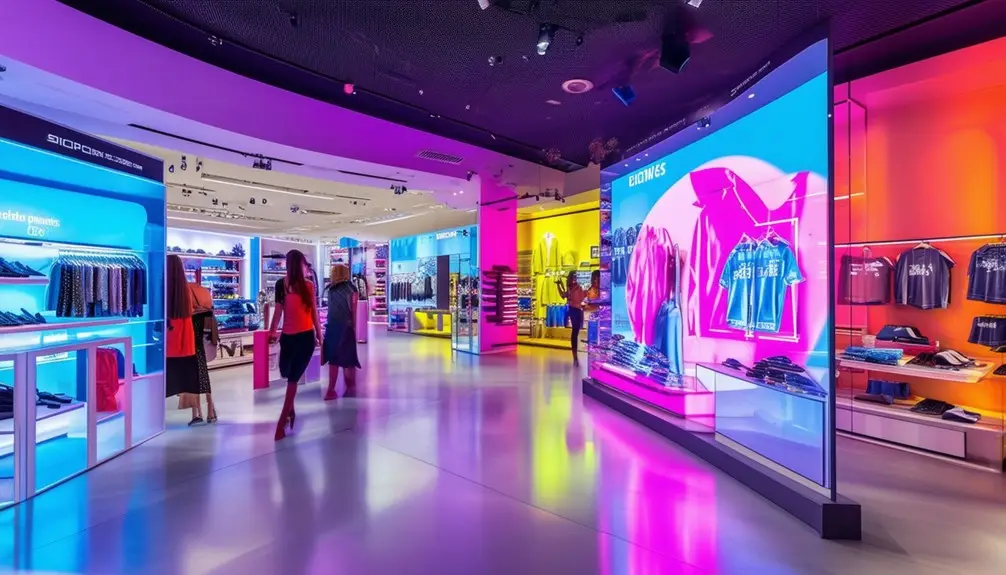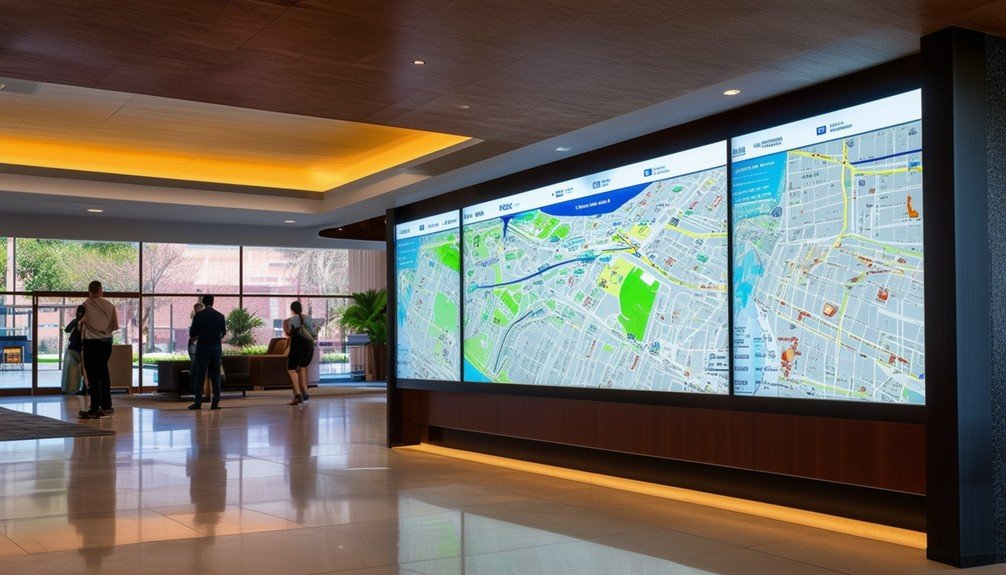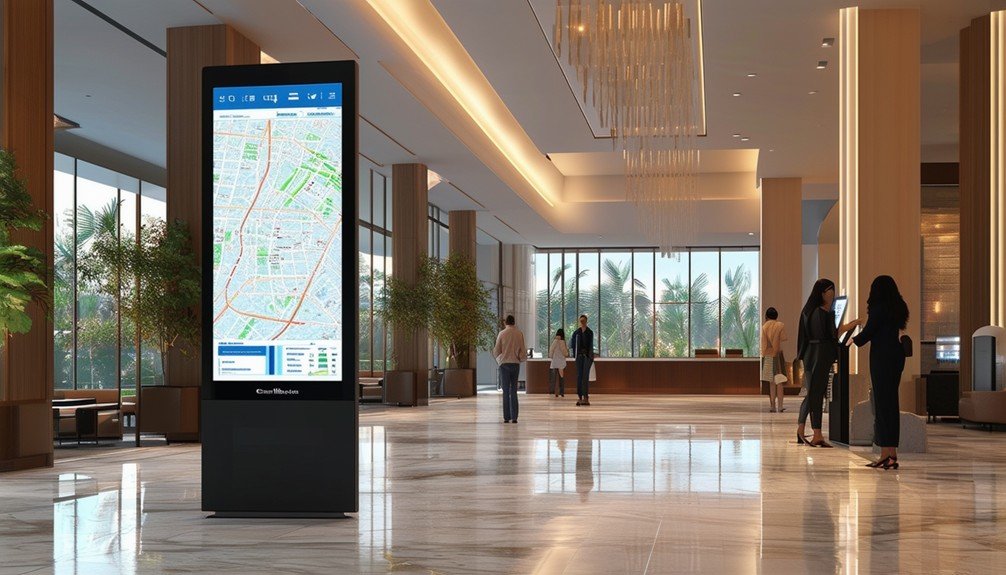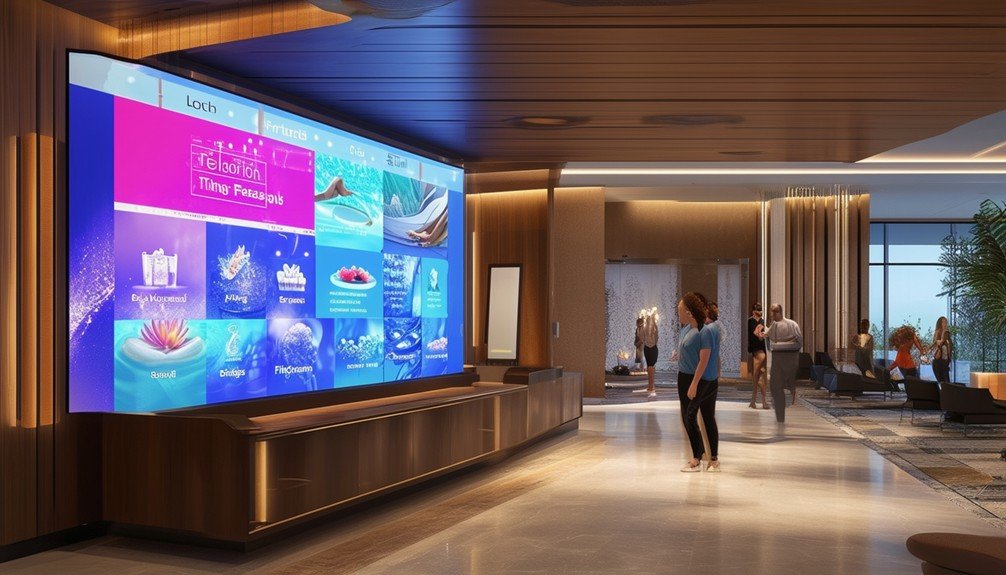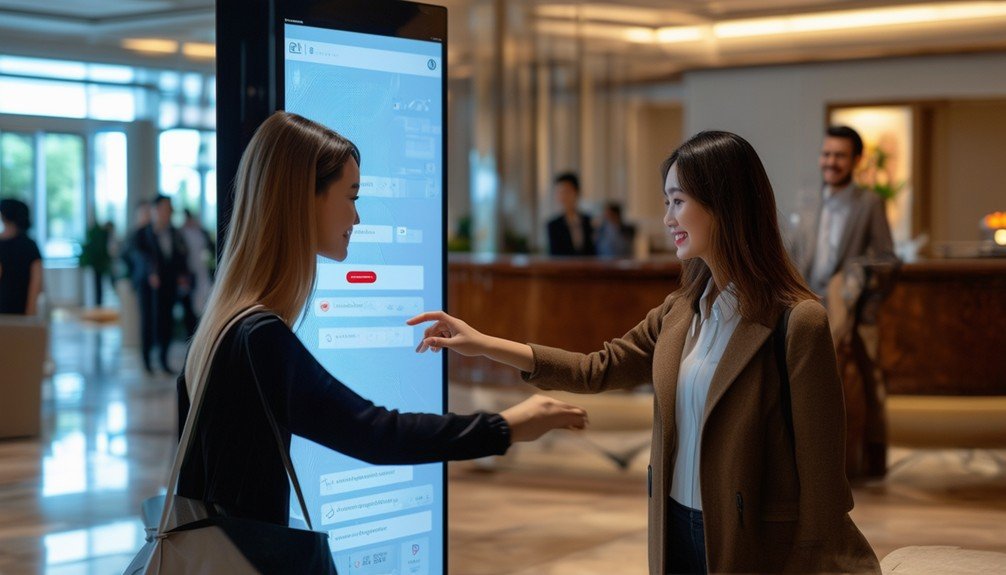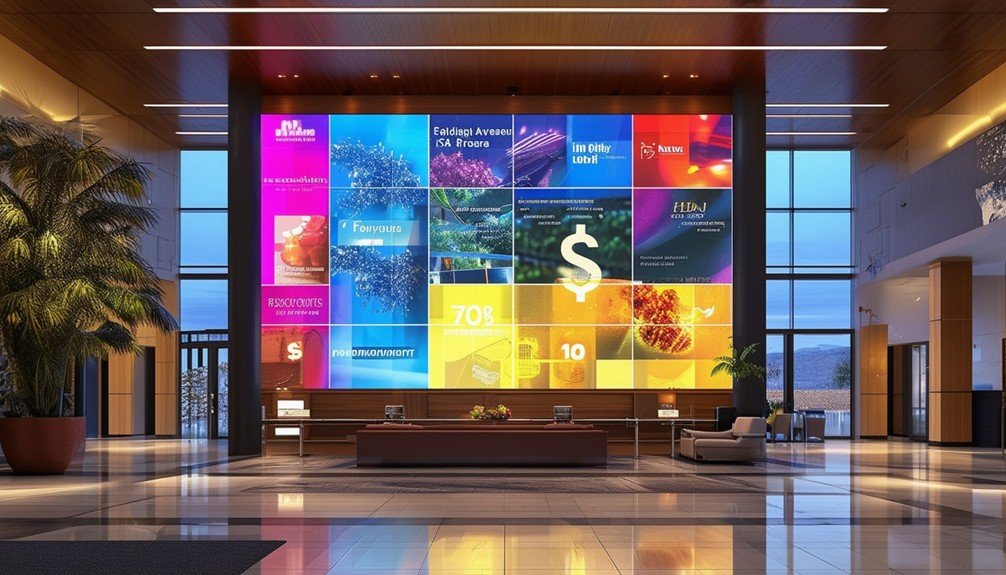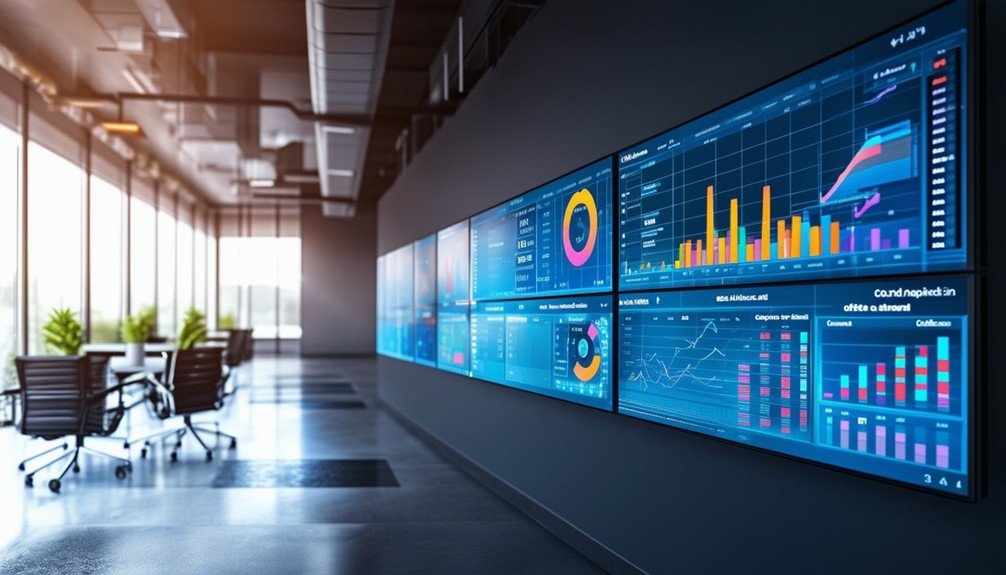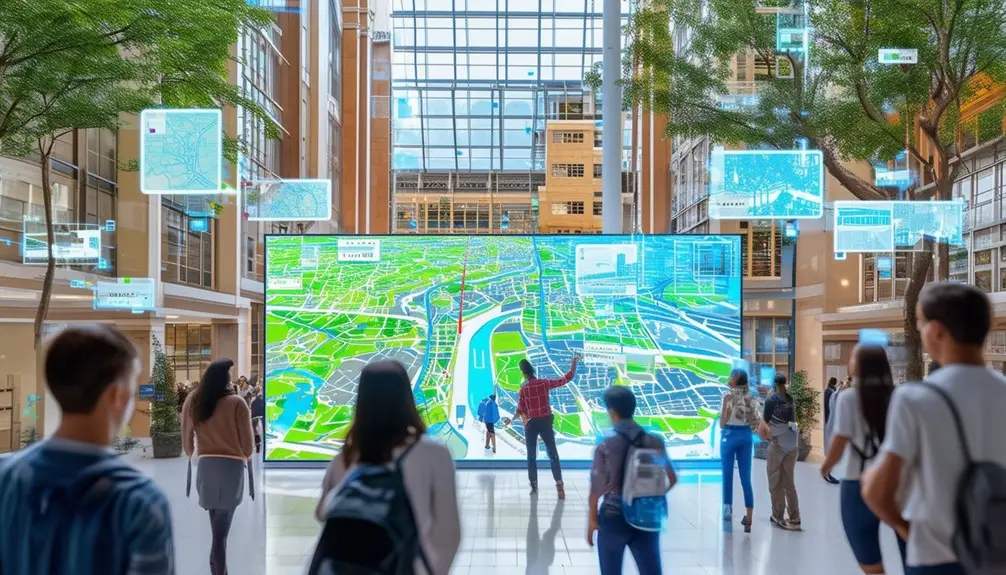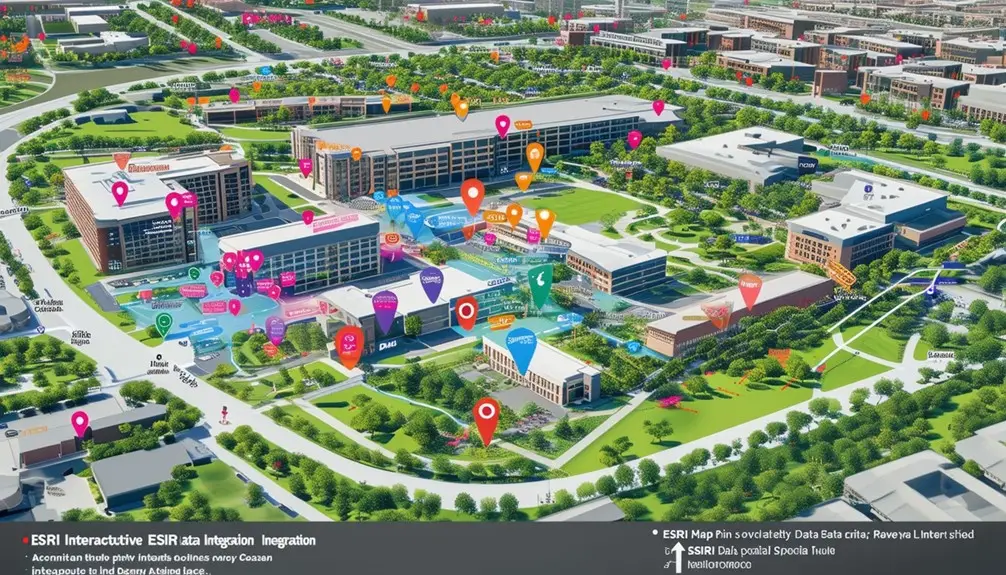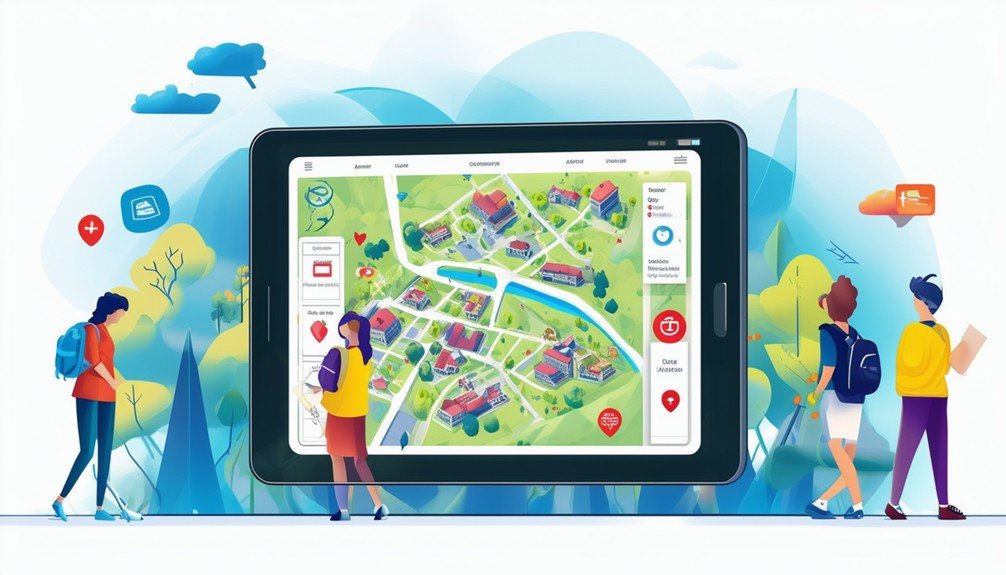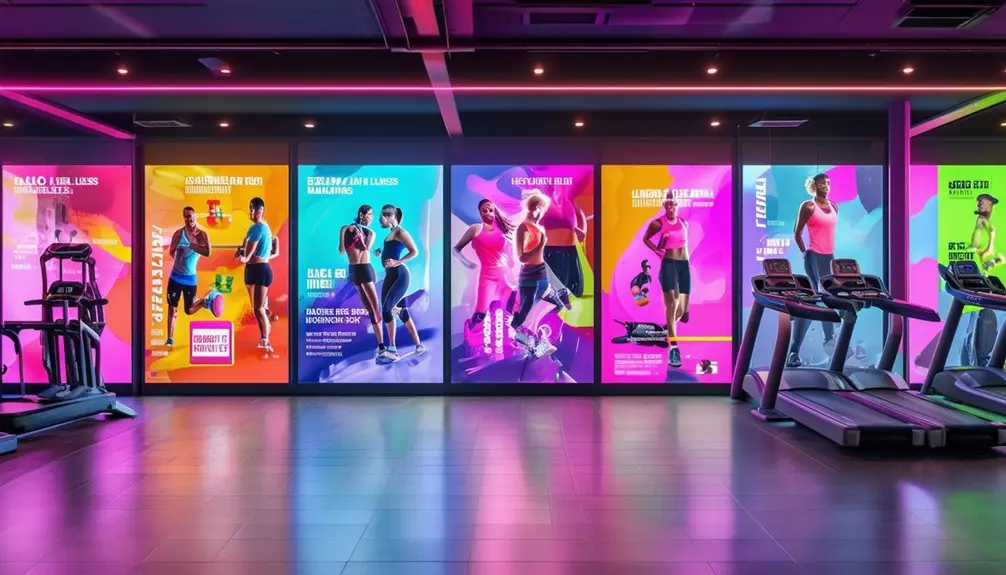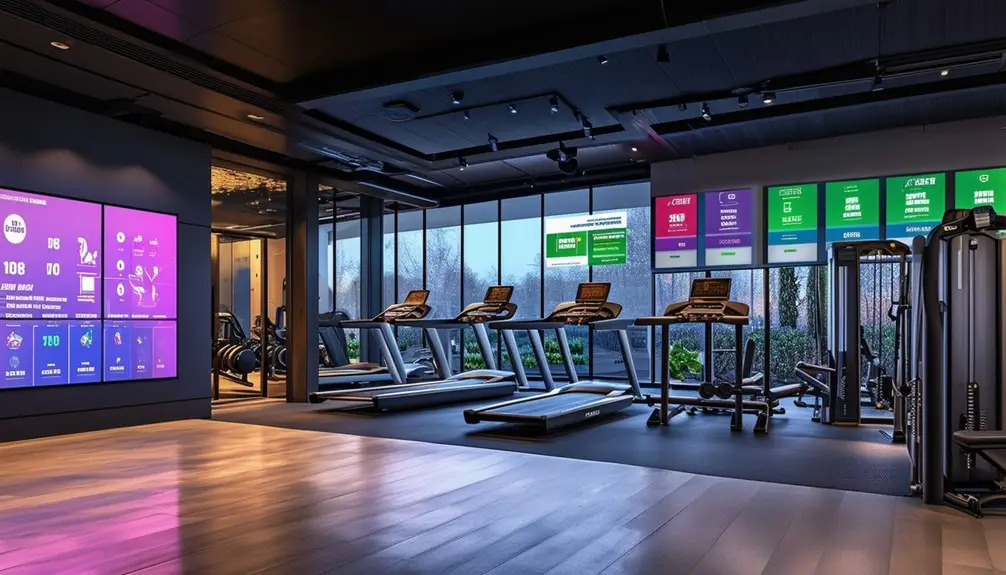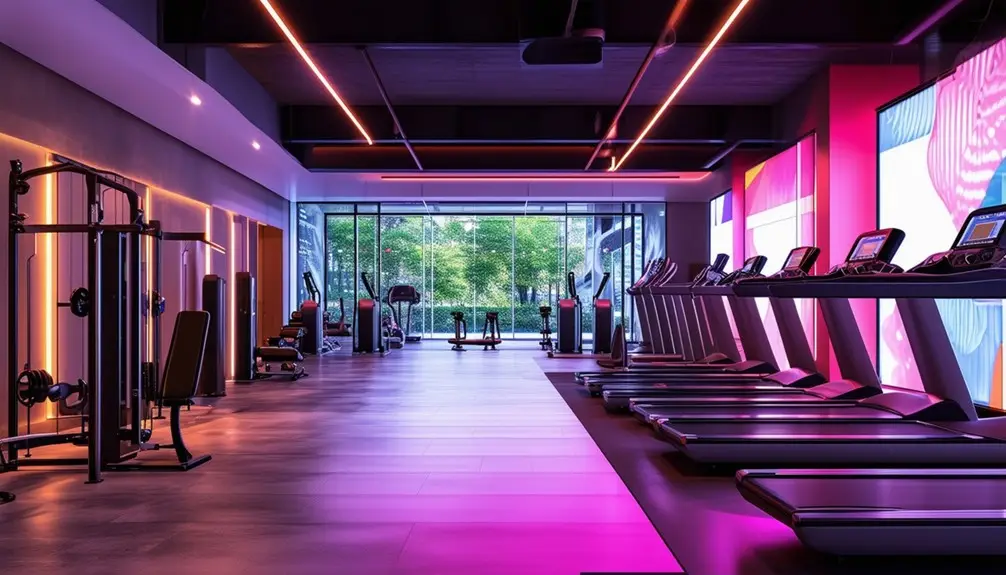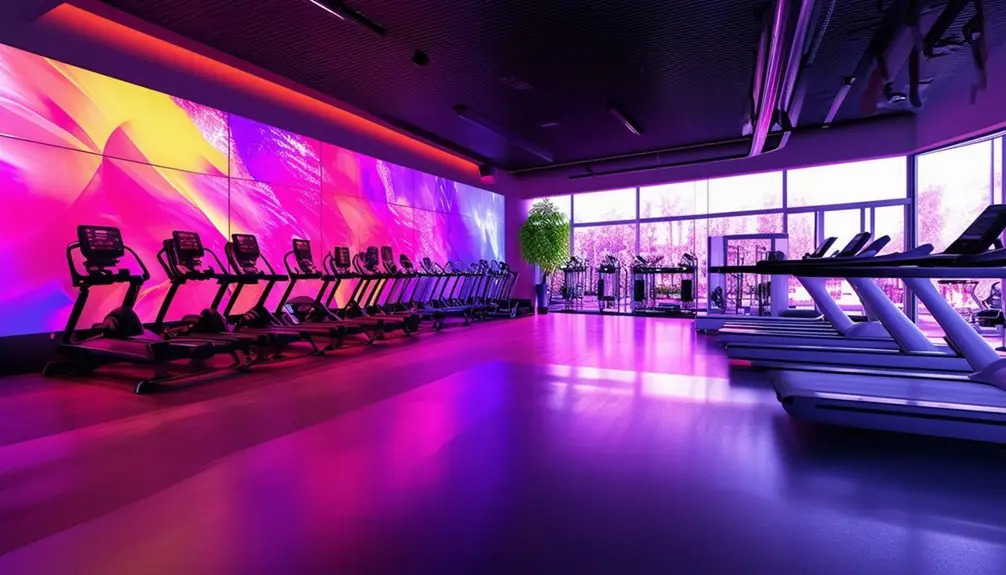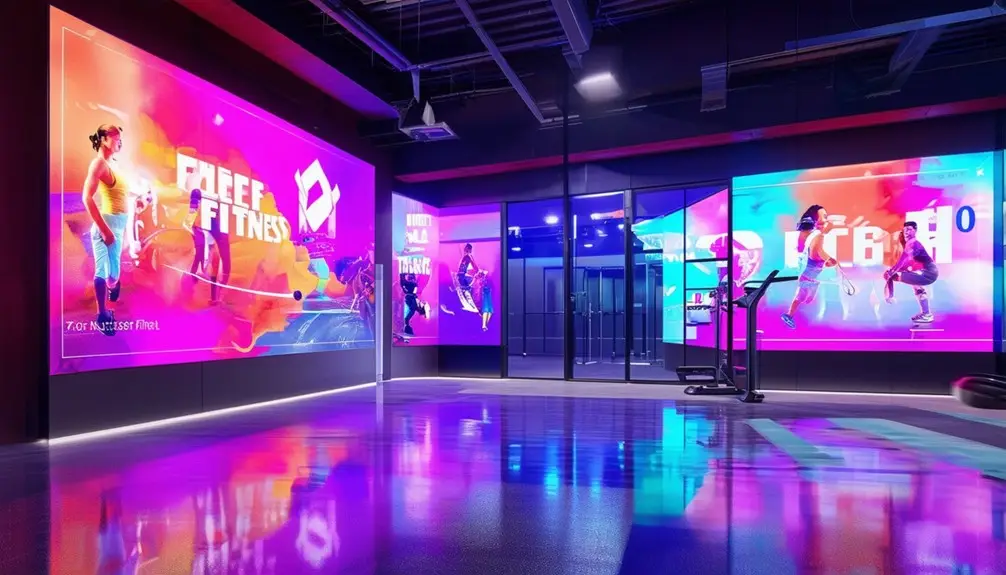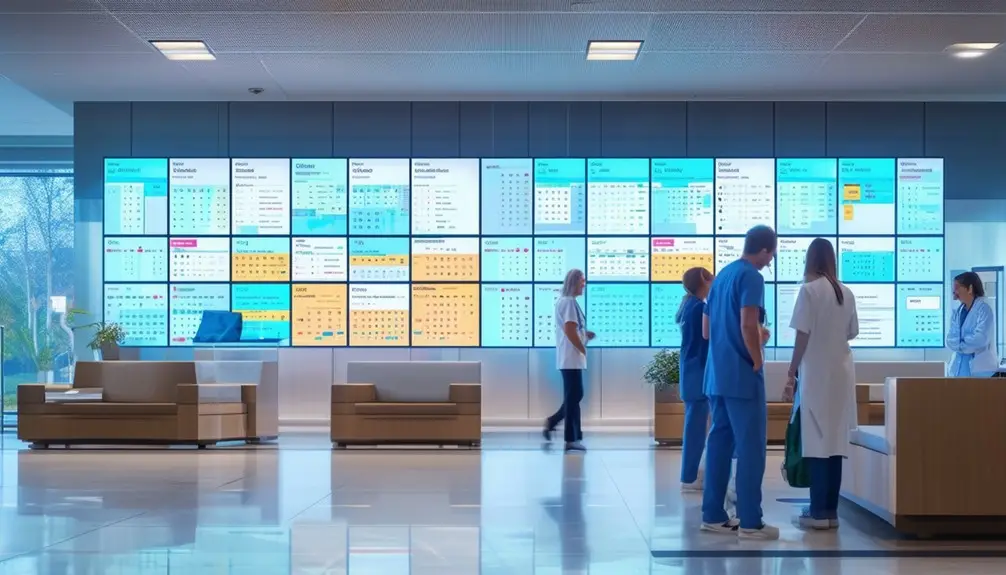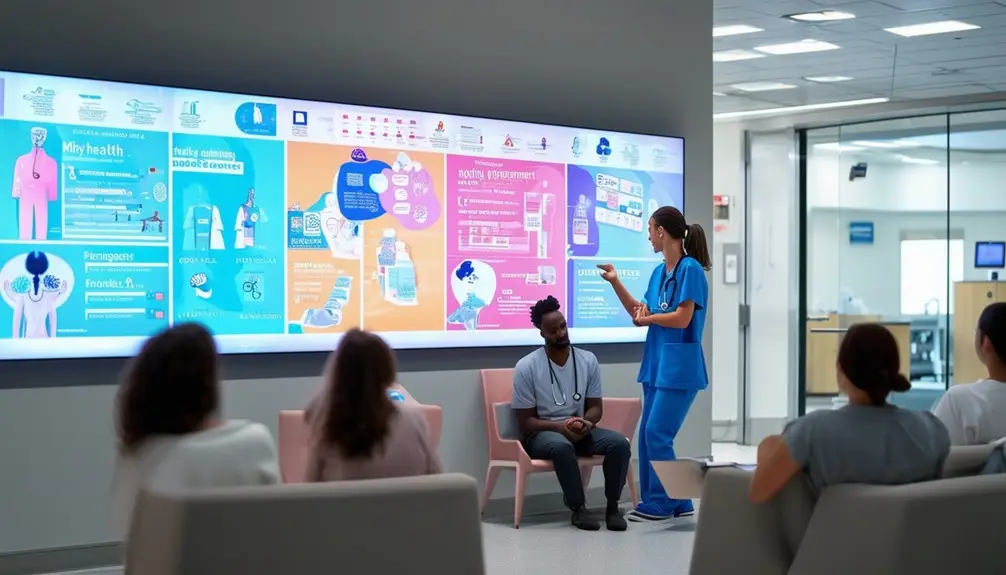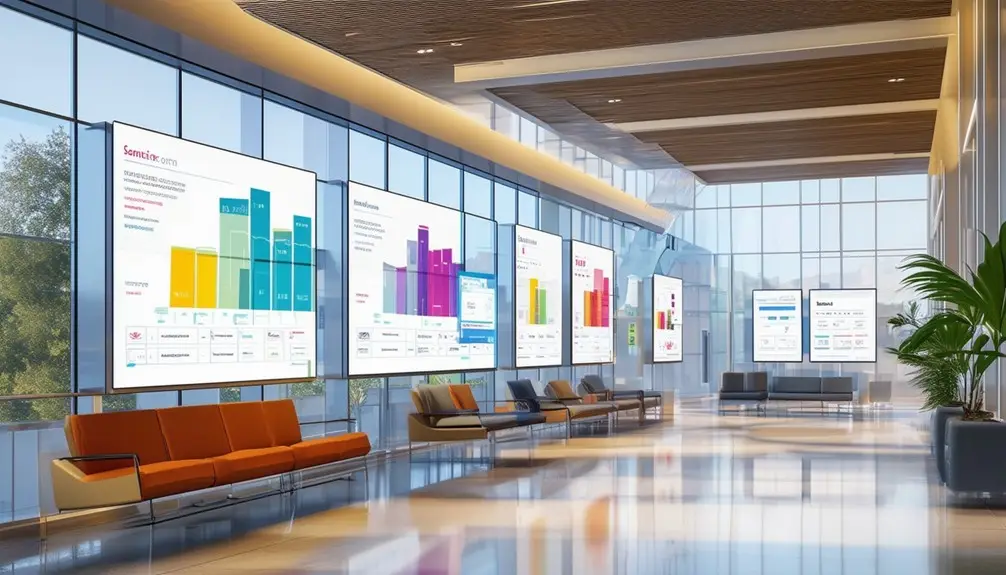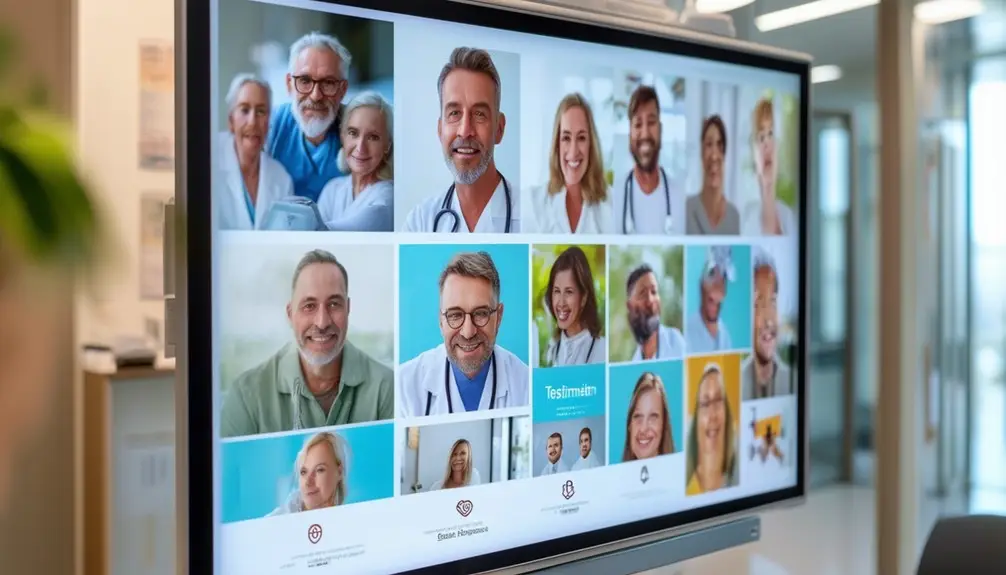-
0 Comments
Digital boards in hospitals can transform patient care by providing real-time updates and eliminating outdated whiteboards. They integrate seamlessly with EHR systems like EPIC, ensuring accurate and immediate access to patient data. These industrial-grade displays operate 24/7, enhancing communication and efficiency. Automated syncing reduces manual tasks, allowing staff to focus more on patient care. Features like customizable content and RTLS pop-ups deliver critical information right at the bedside, improving both staff workflow and patient satisfaction. Hospitals using these boards report enhanced communication, safety, and patient-centered care. Discover the substantial benefits and success stories behind this technology today.
Key Takeaways
- Digital boards offer real-time updates and automatic syncing with EPIC EHR for precise patient information.
- Industrial-grade displays ensure 24/7 operation and continuous access to accurate data.
- Enhanced communication and efficiency through automated updates reduce the need for manual data entry.
- Improved patient care quality with customizable content and patient-friendly terminology.
- Hospitals like UNC Health Blue Ridge have successfully integrated digital whiteboards to enhance patient-centered care.
Transforming Patient Care
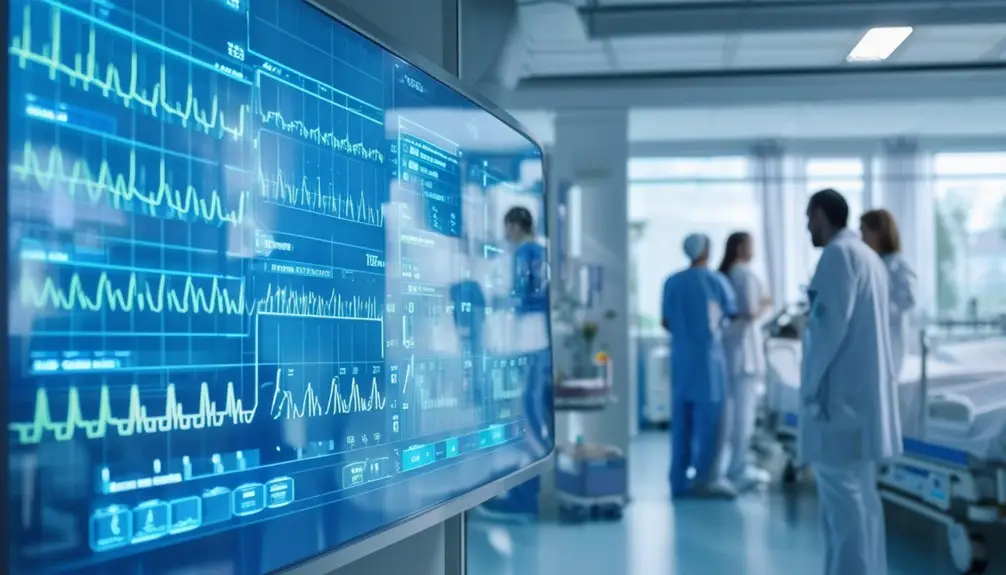
Digital Boards transform patient care by providing real-time updates on patient status and staffing, which greatly enhances communication and efficiency. When you use these digital patient boards, you eliminate the need for traditional whiteboards, streamlining the workflow significantly. By automatically syncing with the EPIC electronic health records system, these boards ensure that patient information is always up-to-date and accurate. This integration reduces the manual effort required by staff, allowing more time to be dedicated to direct patient care.
The industrial-grade displays guarantee 24/7 operation, so you can rely on continuous service without the risk of downtime. This constant availability not only improves patient satisfaction but also guarantees that staff remain informed about patient needs and changes in real-time. The seamless integration with EPIC EHR and vendor-neutral adaptability make these digital patient boards indispensable in modern healthcare settings.
With real-time care guidance, these interactive digital boards empower communication between patients and caregivers. This dynamic interaction elevates the quality of care and contributes to higher staff satisfaction. By leveraging cutting-edge technology, Digital Boards fundamentally reshape the landscape of patient care, prioritizing efficiency, accuracy, and enhanced communication.
Key Benefits of Digital Boards
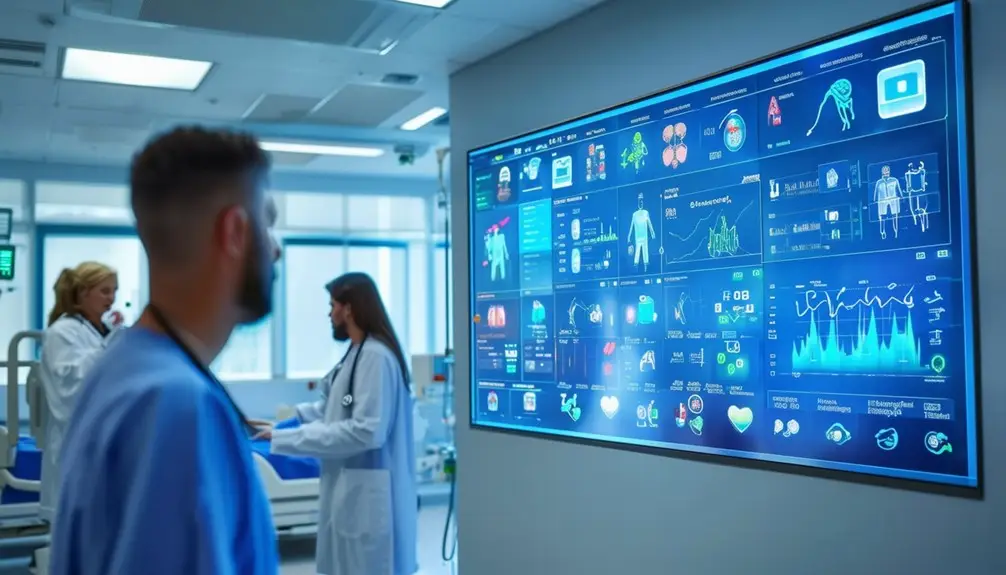
Digital Boards offer numerous key benefits, including real-time updates and synchronization with EPIC electronic health records, which streamline patient care and enhance communication. Digital Boards stand out with their industrial-grade displays designed to operate 24/7, notably improving patient satisfaction and communication.
Real-time updates ensure that both patients and healthcare providers have immediate access to the most current information. This capability eliminates the lag associated with manual updates, allowing staff to focus more on direct patient care.
Integrating Digital Boards with EHR systems like EPIC guarantees safe and precise patient data sourcing. This seamless integration enhances collaboration among healthcare professionals, reducing errors and improving overall care quality.
Efficient communication features embedded in Digital Boards are designed to elevate patient care quality and staff efficiency. Here’s why you should consider implementing them:
- 24/7 Operation: Reliable, around-the-clock functionality boosts patient and staff confidence.
- Real-time Care Guidance: Immediate updates improve decision-making and patient outcomes.
- Enhanced Collaboration: Seamless EHR integration facilitates better teamwork among healthcare providers.
- Reduced Manual Updates: Streamlined processes free up staff time for more critical tasks.
Enhancing Healthcare Delivery
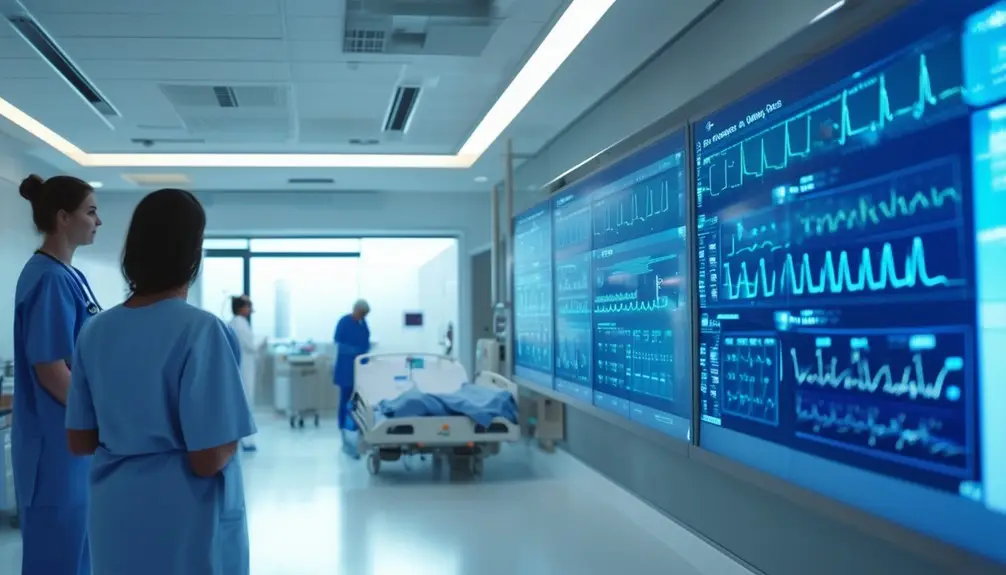
By integrating real-time updates and EHR synchronization, healthcare providers can greatly enhance the efficiency and quality of patient care delivery. Digital Boards, for instance, offer real-time updates and automatic synchronization with EPIC electronic health records. This means that any change in a patient’s condition or treatment plan is instantly reflected on the digital board, ensuring nurses and doctors are always informed.
Industrial-grade displays on these Digital Boards operate 24/7, enhancing patient satisfaction by providing continuous, accurate information. Oneview Healthcare’s integrated Digital Whiteboards act as information hubs, replacing outdated manual boards and utilizing real-time HL7 integration for the most current data. This streamlines nursing workflows and fosters meaningful interactions, ultimately improving care experiences.
The RTLS Pop-up feature delivers customizable information directly to care providers at the bedside, using patient-friendly terminology. This not only enhances communication but also makes complex medical information more accessible and understandable for patients and their families.
EHR Integration Advantages
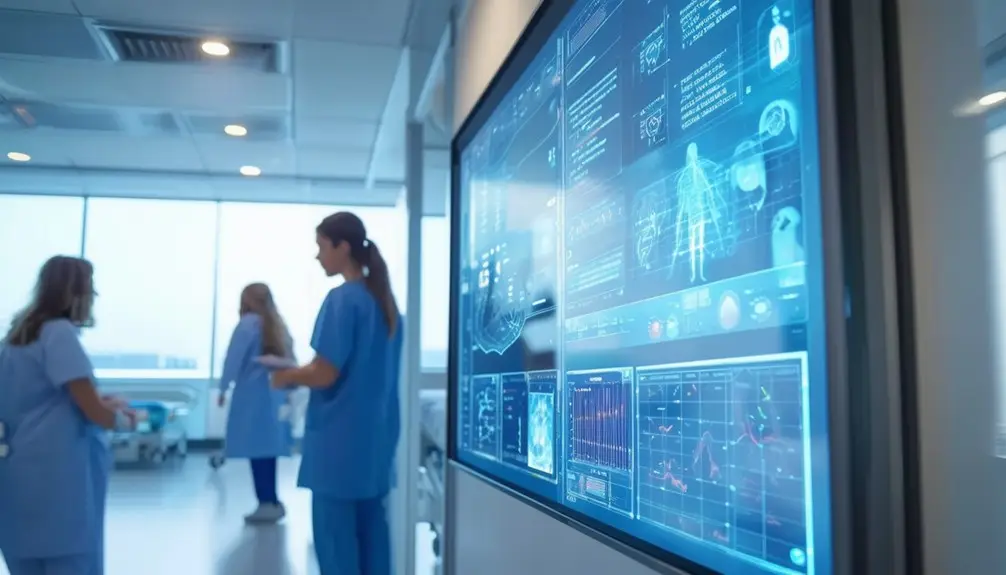
When you integrate EHR with digital boards, you streamline healthcare workflows by automating real-time data updates, which eliminates redundant tasks. This not only enhances patient interaction by simplifying complex information but also guarantees clinicians spend more time on patient care. Evidence shows hospitals using these boards report significant time savings and improved patient satisfaction.
Streamlined Healthcare Workflows
Seamless EHR integration with digital boards revolutionizes healthcare workflows by automating patient data updates and enhancing real-time communication among healthcare professionals. EHR-integrated digital whiteboards are a game-changer, providing a clear, accessible platform that simplifies complex healthcare information. This integration has tangible benefits, including improved patient care quality, satisfaction, and staff efficiency.
Consider the following advantages:
- Efficiency Boost: Automated updates eliminate redundant data entry, freeing up clinicians to focus more on patient care.
- Enhanced Communication: Real-time updates make certain all healthcare team members are informed, reducing miscommunication and errors.
- Streamlined Workflows: Integrated systems streamline nursing workflows, making it easier to manage patient information and care plans.
- Patient Engagement: Simplified information on digital boards helps patients understand their care better, increasing engagement and satisfaction.
EHR-integrated digital whiteboards have a proven impact on clinician efficiency, education completions, and patient engagement. By integrating these boards with EHR systems, hospitals can provide real-time care guidance, leading to more coordinated and effective patient care. The evidence is clear: these digital solutions are essential for modernizing healthcare workflows and improving overall patient outcomes.
Real-time Data Updates
Integrating EHRs with digital boards confirms that patient information is updated in real-time, guaranteeing that healthcare professionals always have the most accurate and current data. When you leverage EHR_integration, patient data is automatically synchronized with EPIC electronic health records, eliminating the need for manual updates by staff. This automation not only reduces the risk of human error but also saves valuable time, allowing your team to focus on patient care.
Real-time data updates enhance communication and collaboration among healthcare professionals. With precise patient data sourcing from EHR integration, your team can make informed decisions quickly and efficiently. This leads to improved patient care quality and satisfaction since essential patient information is always displayed accurately and promptly.
Additionally, EHR integration with digital boards boosts staff efficiency and satisfaction. Interactive digital boards provide accurate care guidance, helping your staff stay organized and informed. This technological advancement guarantees that everyone involved in patient care is on the same page, minimizing misunderstandings and enhancing overall workflow.
Enhanced Patient Interaction
Leveraging EHR integration with digital boards not only streamlines data updates but also greatly enhances patient interaction by providing real-time, personalized information. This integration guarantees that patients and healthcare providers have access to the most current and accurate data, fostering better communication and engagement.
Here’s how EHR integration enhances patient interaction:
- Personalized Information: Patients receive tailored updates, making their hospital stay more transparent and comprehensible. This personalization helps in addressing individual needs promptly.
- Real-time Updates: Automated updates from EHR systems guarantee that the information displayed is always current, reducing errors and improving the quality of care.
- Streamlined Workflows: Digital boards reduce the need for manual data entry, allowing healthcare providers to focus more on patient care rather than administrative tasks.
- Improved Satisfaction: Enhanced patient interaction through these boards increases patient satisfaction by ensuring they are informed and involved in their care journey.
Data shows that interactive digital boards, seamlessly integrated with EHR systems, lead to better care coordination and efficiency. By minimizing manual tasks and ensuring precise information flow, you can markedly enhance both the patient experience and overall care quality.
Real-time Communication
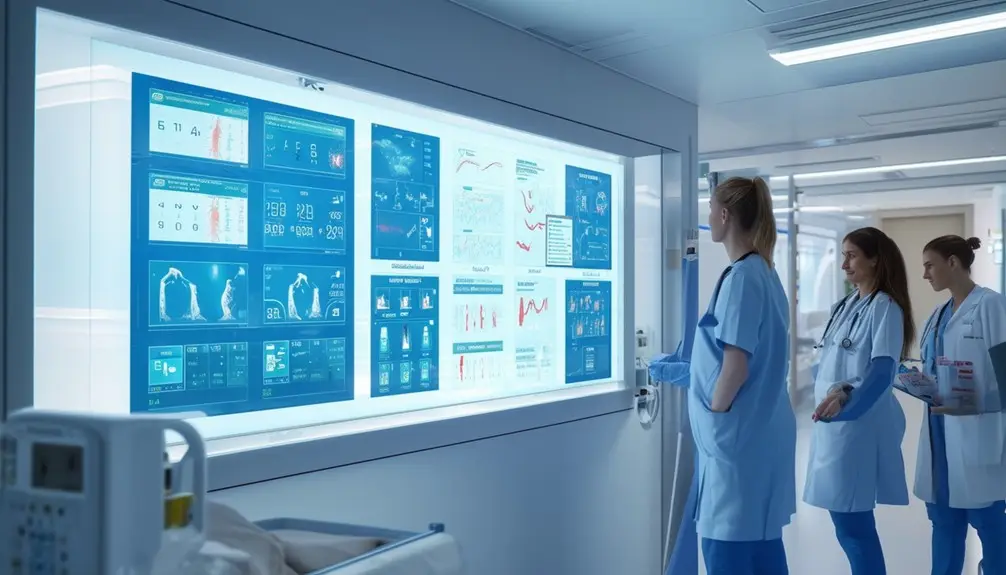
Real-time communication on hospital patient information digital boards guarantees that staff and patients receive instant updates, greatly enhancing efficiency and care quality. By automatically synchronizing with EPIC electronic health records, these digital boards eliminate the need for outdated low-tech whiteboards, streamlining communication and improving workflow. For instance, when a patient’s status changes, the digital board updates in real-time, ensuring that everyone from nurses to physicians has the most current information.
This immediate synchronization translates into better patient care quality. Interactive digital boards allow staff to quickly identify and address patient needs, reducing response times and minimizing errors. Data shows that hospitals implementing real-time communication systems see a significant improvement in staff efficiency and patient satisfaction scores. Accurate, up-to-date information means fewer misunderstandings and a more cohesive care team.
Patient satisfaction is elevated as patients and their families are kept informed. They can see updates about their care plan, which reduces anxiety and builds trust in the healthcare team. Overall, the real-time communication capability of digital boards fosters a more organized, efficient, and patient-centered environment, setting a new standard in hospital care.
Innovative Features
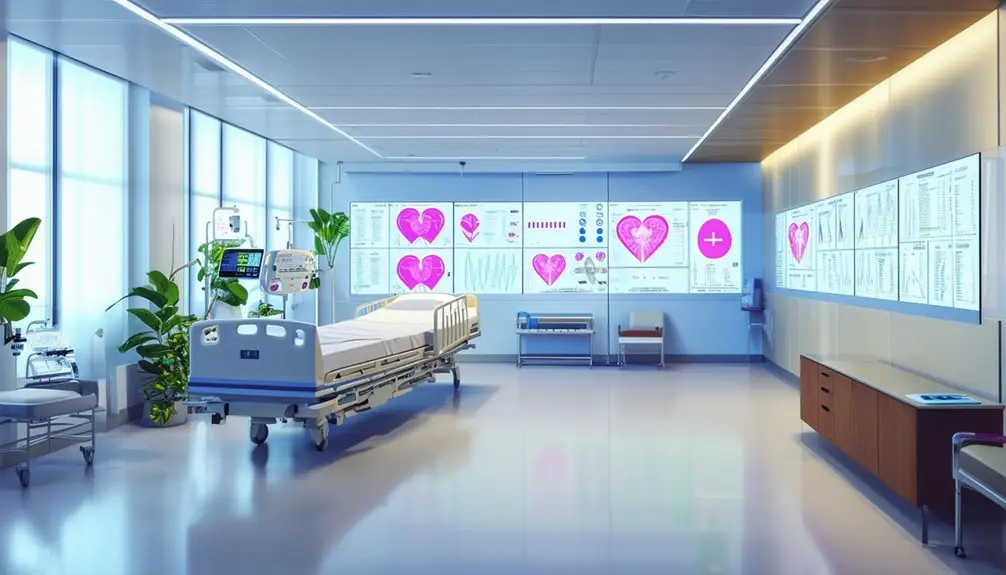
The innovative features of hospital patient information digital boards, such as personalized content display and automatic real-time updates, enhance data accuracy and patient care quality to a large extent. When you walk through the digital door of a modern healthcare facility, you’ll notice how these boards revolutionize patient information management.
- Personalized Experience: Each digital board is tailored to display relevant patient information at a glance, making sure that both patients and healthcare providers have immediate access to critical data.
- Hands-off Automatic Updates: With real-time patient data accuracy, healthcare staff no longer need to manually update information, reducing the risk of errors and freeing up valuable time for patient care.
- Customizable Content Display: Digital boards offer various modality options, allowing for configurable content customization that meets the specific needs of each department or individual patient.
- Enhanced Patient Care: Dedicated, interactive digital boards contribute to a better patient care experience by providing clear and concise information, which can improve communication and reduce anxiety for patients and their families.
Evidence shows that these features not only streamline hospital operations but also greatly improve the overall patient experience. By integrating these innovative elements, hospitals can ensure a more efficient, accurate, and patient-centric environment.
Hospital Success Stories
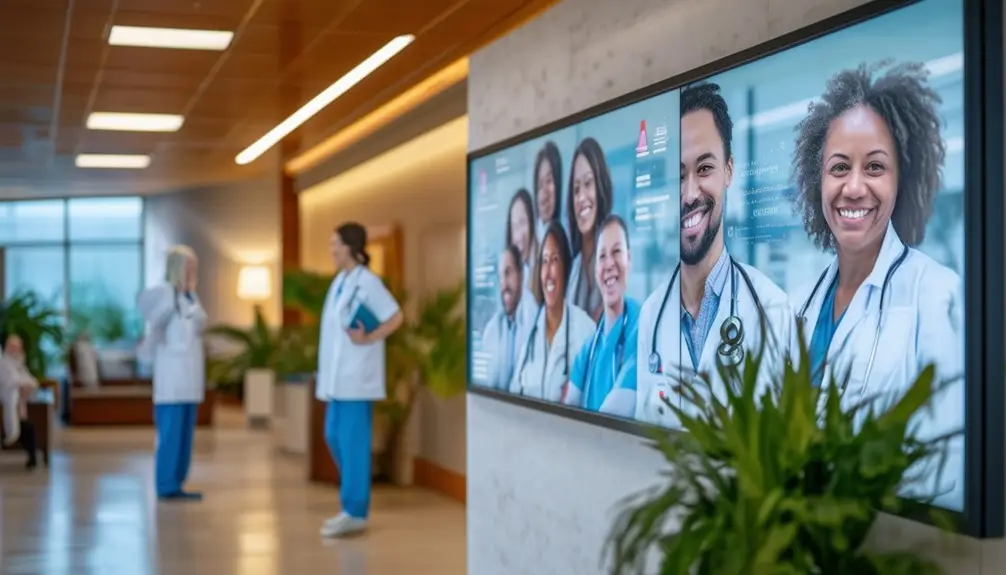
Many hospitals have successfully enhanced patient care and communication by implementing Digital Whiteboards, as evidenced by the experiences of UNC Health Blue Ridge, Cannon Memorial Hospital, and McLaren Greater Lansing Hospital. UNC Health Blue Ridge integrated these digital whiteboards into their new intensive care units, demonstrating a strong commitment to leveraging advanced technology for improved patient care.
Cannon Memorial Hospital’s upgrade to Digital Whiteboards underscores the importance of innovative communication solutions in healthcare facilities. This upgrade is part of Appalachian Regional Healthcare System‘s broader strategy to prioritize patient-centered care, ensuring that patients and their families have access to up-to-date information and efficient communication channels.
McLaren Greater Lansing Hospital’s decision to incorporate Digital Whiteboard technology in its new facility highlights its focus on enhancing patient satisfaction and communication efficiency. By choosing these digital whiteboards, it is setting a new standard for patient care and experience.
These hospitals’ successful adoption of this technology clearly illustrates the tangible benefits of digital whiteboards in healthcare, from improved communication to enhanced patient care. These case studies provide a compelling argument for other healthcare facilities to contemplate similar upgrades.
Conclusion
Imagine the hospital as a symphony, where digital boards are the conductors, seamlessly orchestrating patient care. These boards symbolize the harmony of technology and healthcare, ensuring real-time communication and EHR integration. With features tailored to enhance efficiency, they transform the patient experience. Success stories from hospitals using digital boards prove their effectiveness. It’s clear: these innovative tools are the key to a future of precise, data-driven care.
Frequently Asked Questions
What Is the Digital Signage Software for Hospitals?
Digital signage software like MEDI+SIGN and VisiCareHD is commonly found in hospitals. These software programs integrate with EPIC electronic health records and offer real-time patient updates, night mode, patient-friendly terminology, and customizable displays, enhancing patient-caregiver communication.
What Is a Digital Board?
A digital board provides real-time, interactive updates and integrates seamlessly with systems like EPIC. It replaces traditional whiteboards, offering industrial-grade displays that run 24/7. Through precise, personalized data, a digital board improves communication, efficiency, and patient satisfaction.

